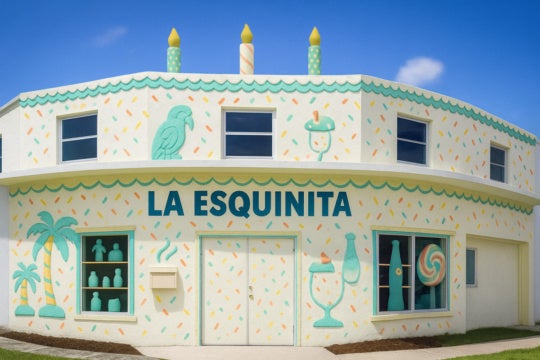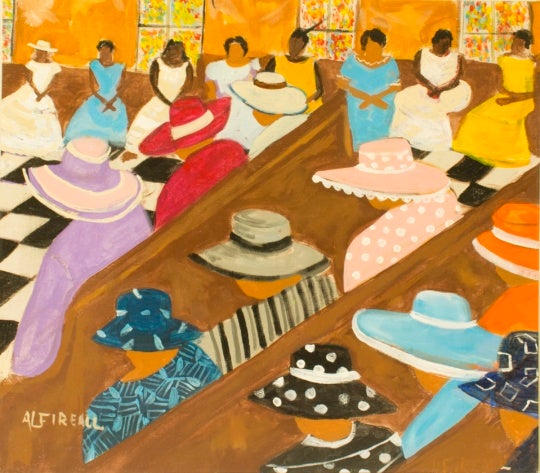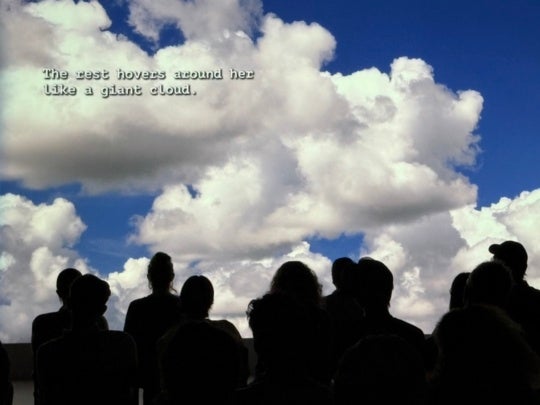
The exhibition “Daniel Arsham: Hourglass” opened this past Friday night at the High Museum of Art, astonishing visitors with three site-specific installations by the New York-based artist. Arsham plays with conventions of time and space in installations that infuse architecture and archeology with a surreal, paradoxical flavor. In 2004, a year after graduating from Cooper Union, Arsham was asked by celebrated modern dance choreographer Merce Cunningham to create the scenography for his work eyeSpace, initiating a career in stage design that has led to collaborations with avant-garde playwright Robert Wilson as well as rapper and producer Pharrell Williams. In Atlanta, Arsham is taking on opera scenography for the first time in two productions this spring by the Atlanta Symphony Orchestra.
The artist’s appetite for interdisciplinary collaboration has become a defining characteristic of his practice. Snarkitecture, a design studio co-founded by Arsham and architect Alex Mustonen, completed an outdoor installation at Marlins Park in Miami in 2012, and his sci-fi-inspired film work will culminate in Future Relic, an upcoming feature film starring Juliette Lewis, James Franco, and recent Oscar winner Mahershala Ali of Moonlight.

Only one of the three installations in “Hourglass” has been exhibited before, an immersive purple-lit cavern composed of casts of athletic balls. Such striking color, previously unseen in Arsham’s generally black-and-white work, also distinguishes the most monumental installation at the High, a bright blue replica of a Japanese Zen garden. When I arrived in the galleries to speak with Arsham on the day before the exhibition’s opening, I found him in the garden installation, meticulously raking the blue sand in front of the pagoda. Undeterred by the din of the construction that continued around him, Arsham remained focused on the patterned ripples until I could grab his attention. After he climbed out of the sunken garden, I asked him about his new work.

Logan Lockner: Where did your vision for the Zen garden installation come from?
Daniel Arsham: I’ve been spending a lot of time in Japan over the last number of years, and there are many things that struck me about the architecture there and this repetitive act of raking the sand. There are many buildings and temples like this in Kyoto that have remained unchanged for hundreds of years, and the patterns in the sand are redone every single day. When I was looking for an architectural vessel to house these works, it struck me that the use of this was appropriate because of its ability to float in time. The tea houses or temples look the same now as they did five hundred years ago, and maybe will five hundred years from now.
LL: Clearly you’ve maintained an interest in architecture throughout your career, but you also keep returning to themes of history and time, which seem especially foregrounded in this new body of work in “Hourglass.”

DA: I think this specific idea of the confusion of time has been present throughout the work, and given the scale of the space that I’ve been able to use here, I’ve introduced a mixture of themes: these sort of fictional archeological works and others on a more architectural scale.
LL: While you’re here you’ll also be doing stage design for the Atlanta Symphony Orchestra.
DA: It’s kind of like a residency for me here! My background is in stage design; I worked for many years as a scenographer for Merce Cunningham. The opportunity presented itself to carry some of the ideas that I’m using here to the ASO, so I’m working on two operas, Orfeo and Creation/Creator. They don’t have any direct relationship to the works here, but the ethos and palette of the works is quite similar.

LL: You’re working with Lauri Stallings and glo for the operas with the ASO, but also in this exhibition at the High. What has that collaboration been like?
DA: At the High, there’s a single performer upstairs and another downstairs. Downstairs, it’s a child who’s talking about the hourglasses and the objects within them, and up here it’s an older performer changing the patterns in the sand, so ostensibly there’s this time jump between the two.

LL: How does the cavernlike installation relate to the other two?
DA: I always imagined that space as an archeological excavation or a hermit’s lair, and one could imagine that this is the older character’s place of study or contemplation.
LL: You’ve spoken about your interest in archeology and creating the sense of a relic from the present that has been discovered in the future. How does that connect to your use of gemstones and the other more everyday objects that are being used, like the athletic balls?

DA: When I started these works, the idea was to create objects from the present that appeared as if they were in the future, and certainly I could have taken a camera and painted it to look old, but something about this kind of alchemy—this shift of material—gives a greater weight to the objects, and gives a kind of truth to them that is more powerful.
LL: Even as you’re interested in things that seem very concrete, like architecture and history, there’s also an element of fantasy and almost magical realism at play. How do you see that functioning in your work?
DA: I really like science fiction, and it’s certainly influenced my film work. I think the combination of things that are, as you said, solid and concrete, with these ideas that kind of float around can make for a transformative, uncanny experience.
“Daniel Arsham: Hourglass” is on view at the High Museum of Art through May 21. Creation/Creator runs at Atlanta Symphony Hall from March 23 to 25, followed by Orfeo, which runs from May 11 to 13.
Logan Lockner is Assistant Editor of BURNAWAY.




